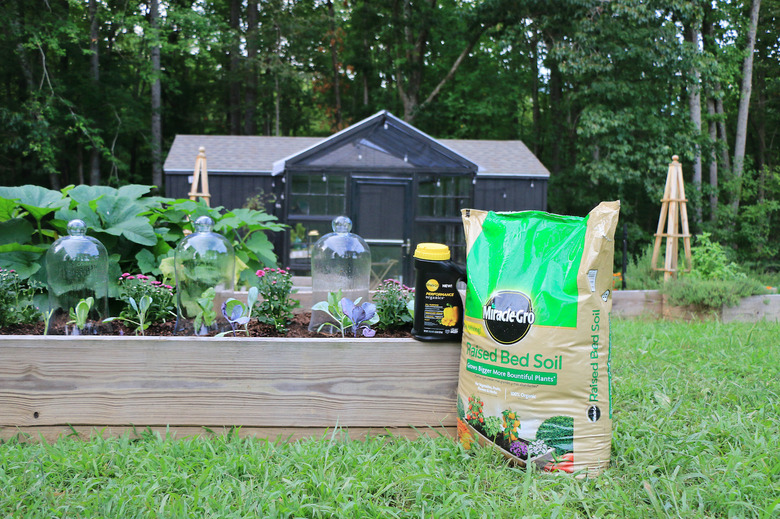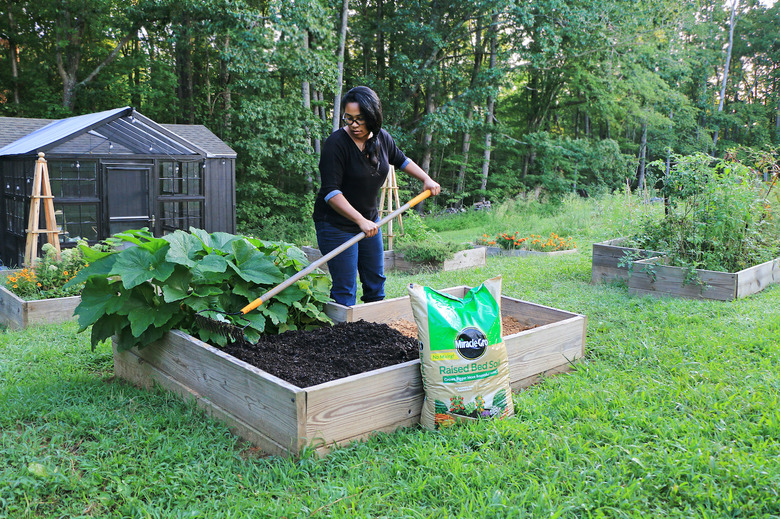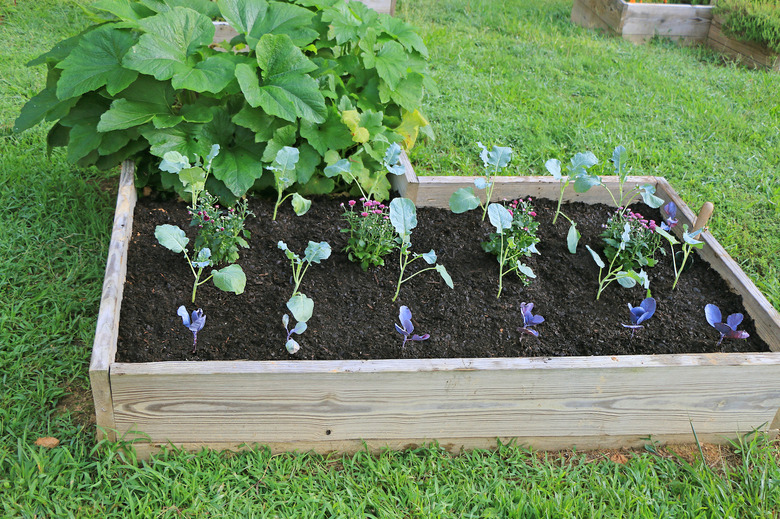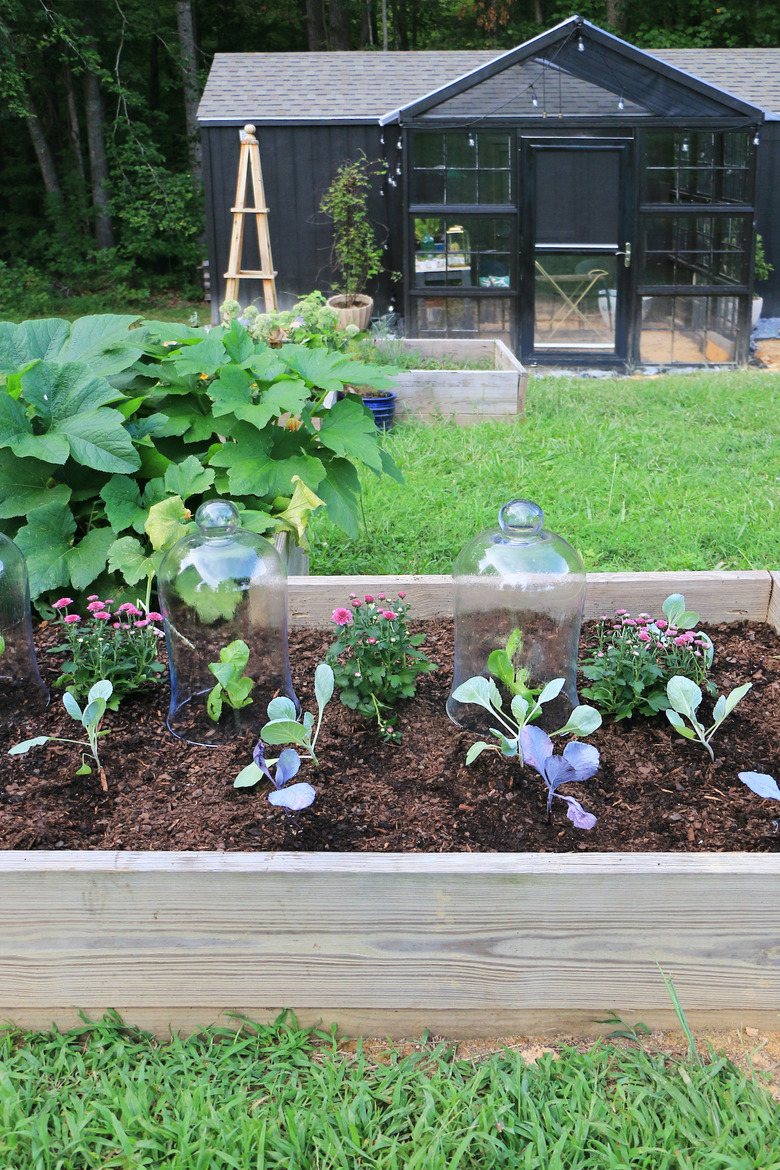The Ultimate Guide To Creating A Gorgeous Fall Veggie Garden
Spend one warm afternoon in a farmer's market and it's clear that summer means a bounty of colorful produce. But just because temperatures start dropping come fall doesn't mean that fresh veggies are off the table (or the Instagram table-scape shot) for the season.
Take it from gardening pro Ursula Carmona: Autumn is prime time for planting, as long as you do a little research.
"I'm getting ready to do some fall planting in my garden, with an emphasis on cool-weather crops, but I'm also planting a second wave of select summer crops as well," says Carmona, the founder of DIY and design blog Home Made by Carmona. "There is a common misconception that fall gardening is limited, but with the proper preparation for the cooler weather, you can have just as robust a garden as in the summer!"
To help you tackle your own fall gardening project, we got Carmona's advice for planting a fall vegetable garden (including her fave soil from Miracle-Gro®) that's as bountiful as it is beautiful — whether you've got a dreamy greenhouse as a backdrop or not.
1. Start With Well-Balanced Soil, Then Add Mulch
The first step of planting your fall veggie garden? Soil, of course. It's important in any style of garden, but in Carmona's raised-bed garden, choosing nutrient-rich soil is even more important (since she has to fill the beds with soil herself).
"Proper soil and plant nutrition are key to a successful fall garden, and gets the garden ready for the rest of the year," she says. "I always prepare my bed in the fall [by mixing in] a layer of Miracle-Gro® Raised Bed Soil, and [then adding] a layer of mulch. Not only does it produce well-balanced soil for ideal growing conditions, but it also means that year after year my garden beds aren't depleted, but rather are building on themselves."
Since fall is typically a rainier season in many parts of the country (like North Carolina, where Carmona lives), keep an eye out for fungal issues that can be caused by inclement weather, she advises. Another one of her pro tips: Choose a well-balanced soil that releases timed nutrients. To that end, her go-to Miracle-Gro® Raised Bed Soil feeds for up to three months and is filled with 100% organic nutrients to help grow bigger plants compared to unfed plants.
2. Vary Your Plant Types
In Carmona's Potager-style garden (which means French kitchen garden, for the uninitiated), she plants flowers alongside vegetables, and arranges them in aesthetically pleasing geometric rows for an overall effect that's both photogenic and functional.
Just one tip if you plan on replicating the look: Do your homework to ensure the plant combinations you choose work well together.
"Certain plants can enhance the flavor of their companion plant, repel insects, and attract pollinators," she says. "But others may be contraindicated as companions. While one flower/vegetable may produce what the other needs to thrive, others may compete for the same nutrient."
In this year's fall bed, she planted cool-weather crops like broccoli, lettuce, and cabbage, interspersed with purple chrysanthemums. Beyond being pretty, mums have insect-repellent properties and will provide some shade to the heads of lettuce, which can't take direct sunlight, Carmona explains. The result? A satisfying color story and a combo that helps each other grow.
3. Prepare for Cooler Days
If you live in a colder climate, that means winter is right around the corner — so you'll need to prep your plants for the incoming chill.
Carmona advises starting your cool-weather crops as early as 12 weeks before the first killing frost in your area (which is deeper and more damaging than the first frost — you can look up the first killing frost in your zip code here), but says to also check each vegetable for its ideal start date.
"I like to start some cool-weather crops early and some later," she says. "Staggering planting times means a staggered harvest."
To help protect the veggies planted later, she recommends using greenhouse crop covers to extend their growing season (or repurposing old windows above raised beds to act as DIY cold frames), or placing glass garden cloches above individual plants.
Finally, add a thick layer of mulch — like Scotts® Nature Scapes® Triple Shred Mulch — to help retain soil heat and suppress weed growth by blocking growth and access to sunlight, and you'll have fresh fall veggies in no time.



